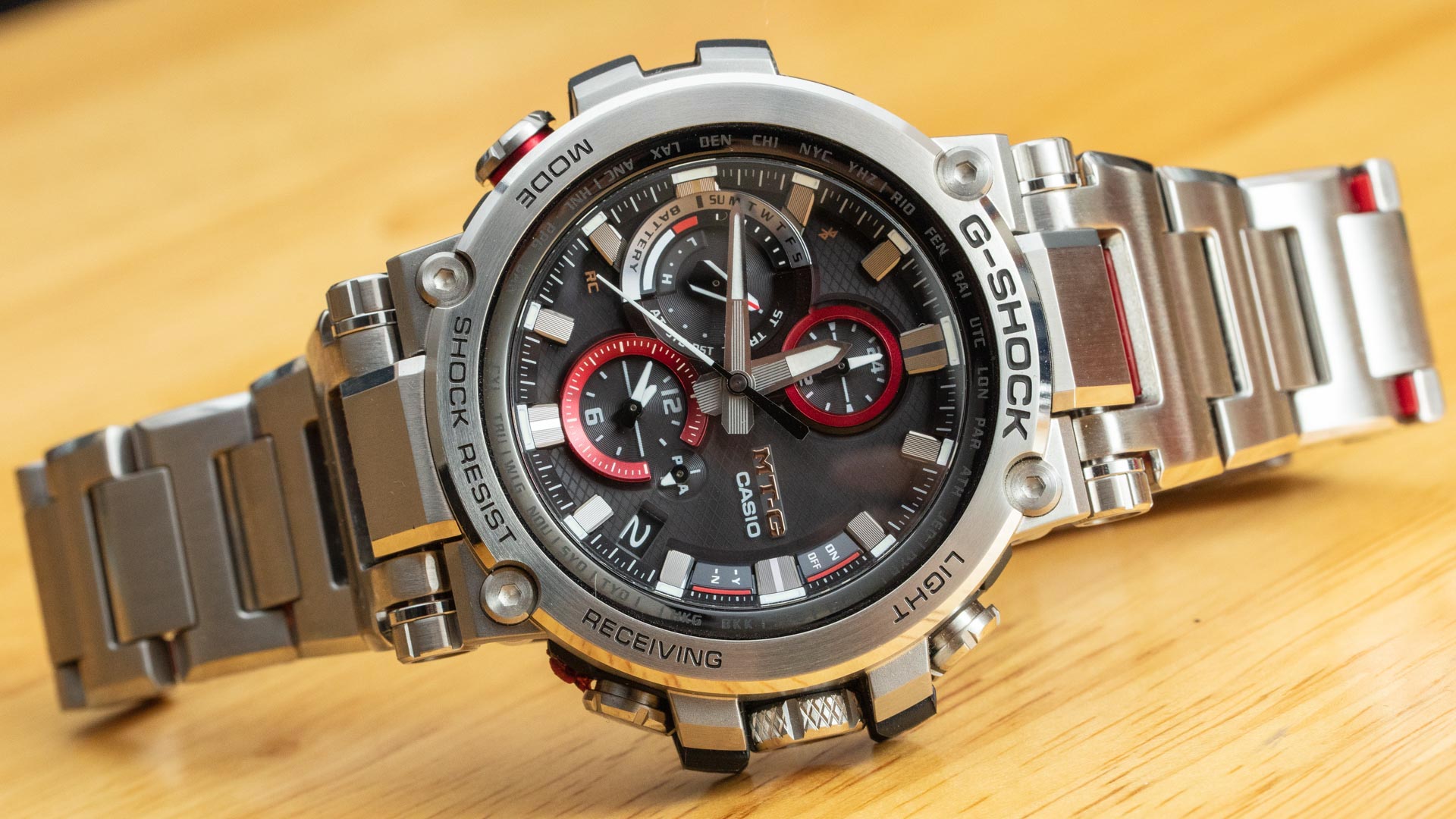
Today, I review the Casio G-Shock MT-G reference MTGB1000D-1A. Several years ago, the notion of reviewing a nearly $1,000 Casio G-Shock watch would be uncommon, to say the least. Myself and many other people grew up with Casio watches being class-leading timepieces at the most affordable price ranges. Casio still offers all of those affordable product types, but over the last several years the Japanese company has very consistently upped the ante when it comes to what a high-end Casio G-Shock is in relation to its more affordable fare. Today in 2019, “high-end prices” for a G-Shock may still cause many traditional watch buyers to do a double-take because of this relative novelty in the market. Recall for a moment that, just recently, aBlogtoWatch announced a $70,000 USD solid gold G-Shock watch here. So, why is it exactly that Casio is not focusing on what we might call a luxury watch segment and what is the intended purpose of these products for the market?
Maturing The Casio G-Shock Watch Platform
Casio’s high-end G-Shock watches mainly focus on two different themes. The first theme is to promote new technology and functionality. GPS receivers and exotic case construction designs always debut first in Casio’s flagship products before those technologies trickle down to its more pedestrian fare. This has been the traditional realm of high-end Casio products. More recently, Casio has been producing luxury-themed watches that are less about new functionality and more about offering a more mature, “adult” look to a product category so often associated with youthful, athletic pursuits. In fact the entire goal behind Casio’s metal cases and analog dials is to promote a more mature and sophisticated aesthetic to a very functionally themed product category. This is very much the case with the Casio G-Shock MT-G collection, of which the MTGB1000 series is the latest line.
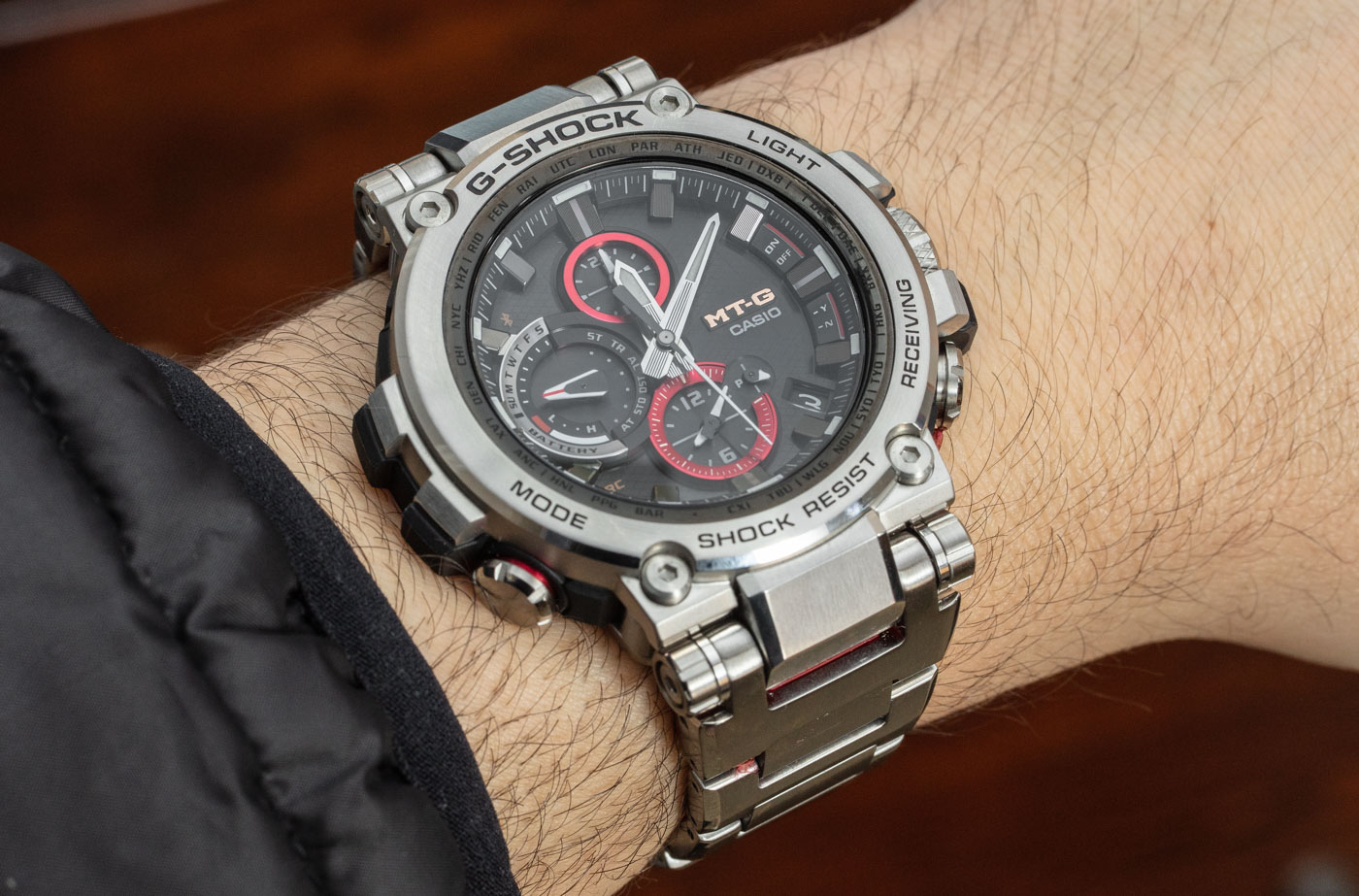
Casio will never abandon the core promise of any G-Shock watch which is of pure durability and functionality. This means that, no matter how “fancy” a G-Shock timepiece might be, it still needs to be extremely shock-resistant, environment-resistant, and a reliable tool on the wrist for the wearer. This is an interesting problem for Casio because it is, in some senses, contradictory. The more useful and durable watch one can produce from an efficiency standpoint is one in a resin case with a digital screen that has no moving parts. Efficiency, however, is not a particularly celebrated element of luxury watches, since for those products consumers are actually purchasing extra attention, extra effort, and extra design. This means that Casio’s celebrated team of engineers and designers need to use an entirely different mental approach when conceiving products such as the G-Shock MR-G and this even more accessible MT-G collection of high-end watches.
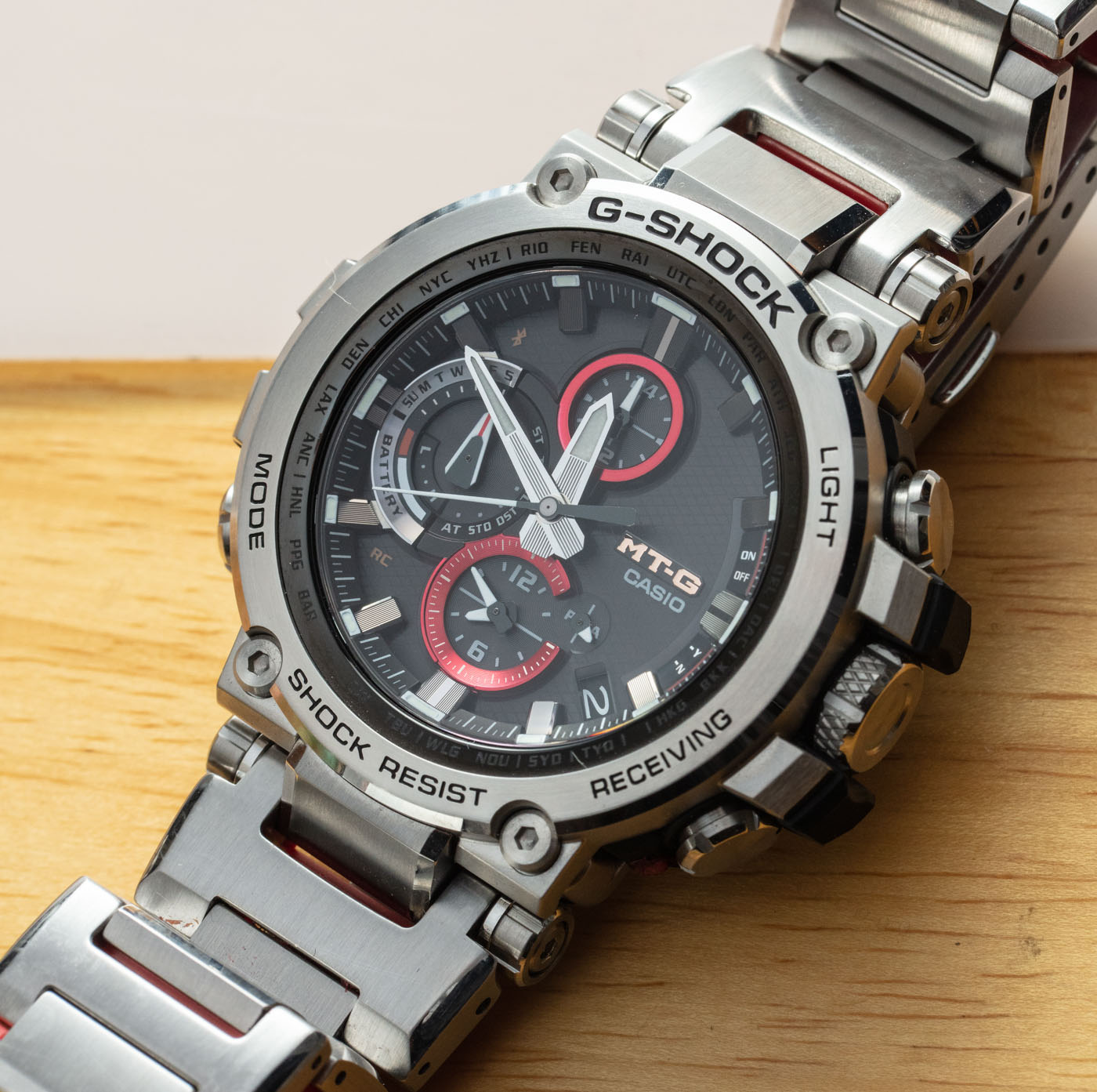
A good way to appreciate the design process at Casio for these watches is to understand that Casio begins with a design and then needs to make it “G-Shock” appropriate. An example is the bracelet for the MT-G watch. Not all versions of the Casio G-Shock MT-G come on a bracelet, but I recommend it since it very much adds a lovely, cohesive and even more high-end look to the watch. The bracelet is steel on the outside but uses red-colored resin link elements on the inside of the bracelet. I believe this enhances wearing comfort as well as overall bracelet durability, while still preserving the look of an “all-metal bracelet.” Another good example of how this is done at Casio is the all-analog dial. Casio’s “Tough Solar” movements are named as such because a special system inside the movement will actually realign the hands to their proper position if they are knocked out of place by shock. This issue doesn’t even exist in a digital watch, but Casio needed to engineer this solution so that they could have a watch with a more attractive all-analog dial that uses traditional hands and hour markers. These are just two examples of how Casio engineered a way to produce a watch with the look they wanted that also fit the requirements of what a G-Shock should be. More on that below.
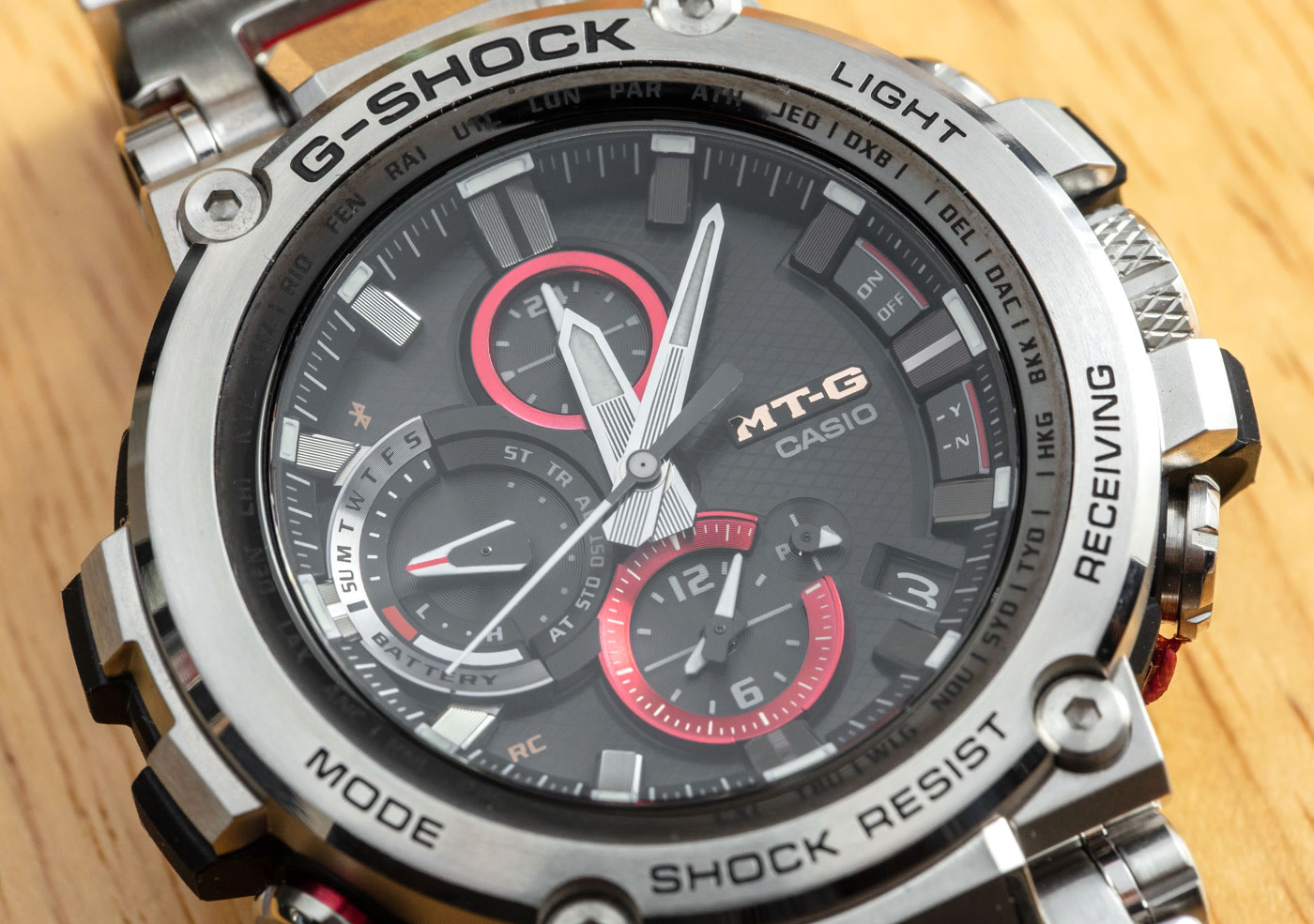
The Modern Way To Set Up Your G-Shock Watch With Bluetooth
One of the core features of the G-Shock MT-G with its module 5544 in-house made Casio movement is Bluetooth connectivity. A discussion of this is very important because consumers need to understand how Casio uses Bluetooth for most of its non-smartwatch products. Bluetooth is used as a tool to let your phone help operate and set-up your G-Shock watch, but isn’t here to annoy you with missed call notifications on your wrist. The MT-G’s movement has two types of connectivity features, a traditional Atomic clock radio signal receiver and a Bluetooth connection. Even more sophisticated Casio watches may also include a GPS receiver for the ultimate trio of “my watch can get the correct time and date information anywhere on the planet.” For the vast majority of urban dwellers GPS in their G-Shock watch isn’t really necessary and the Bluetooth connectivity will deliver everything they want.
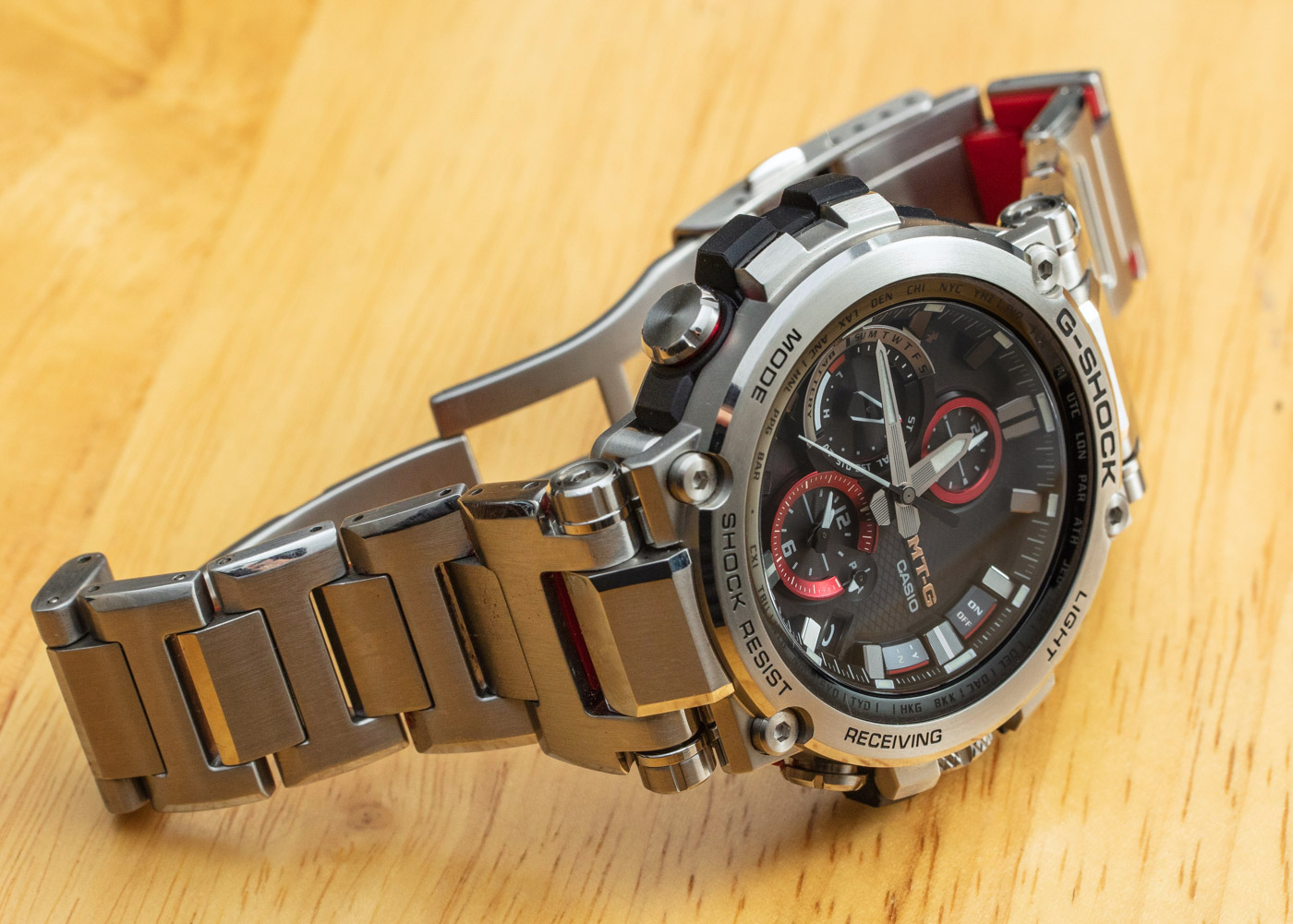
Setting up your MT-G or other modern Casio G-Shock watch with Bluetooth connectivity is a new and welcome part of the experience of getting you new timepiece set up. It used to be that getting a fancy new G-Shock involved a complex dive into the user manual to understand how to set even minor things like the time, your local city, the calendar functions, etc… You can still do all of that from the watch itself, but I don’t recommend it. Casio also doesn’t recommend it because setting up your watch using the G-Shock smartphone app and Bluetooth is so much more simple and effective.
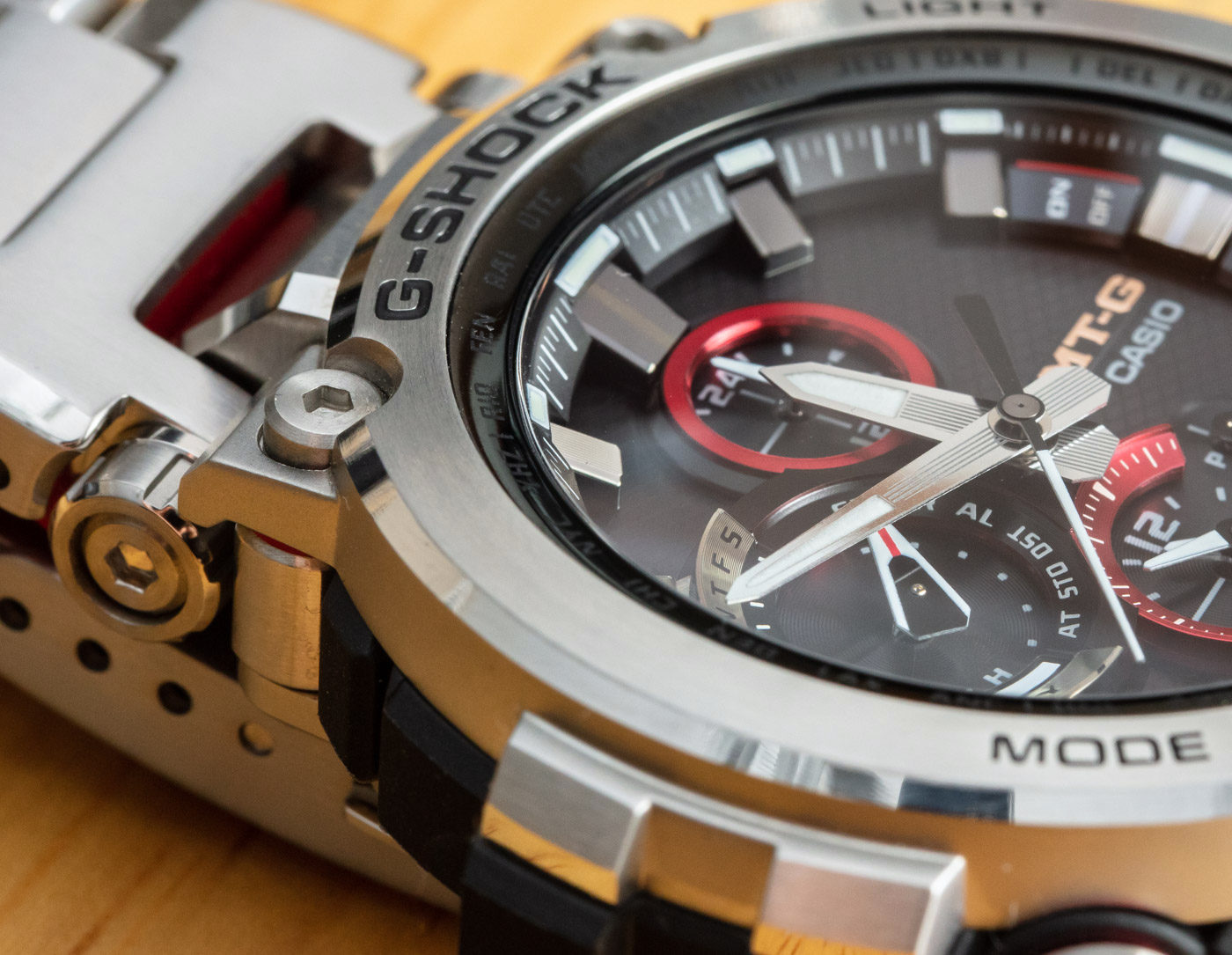
Step one to connecting your phone with your Casio G-Shock MT-G watch is to download the relevant application. Step two is to open the application, which prompts you to press and hold one of the case pushers on the watch in order to establish a Bluetooth connection. Once this happens (and it is very easy) the watch automatically updates the time, location, and calendar data from your phone. This means that, in seconds, your new watch with its many pieces of information on the dial can be adjusted without a frustrated session of button fiddling and instruction manual studying. While this process of setting up your new G-Shock will be fresh to many traditional watch-lovers, I strongly believe that the process is wise and effective. It also helps connect the traditional experience of wearing a G-Shock watch with our modern technology products that are so relevant to our daily lives. Casio needs that sense of contemporary relevancy in order for its products to connect to the lives of today’s youngest watch enthusiasts. This experience is available on most every modern Casio watch that includes Bluetooth connectivity.
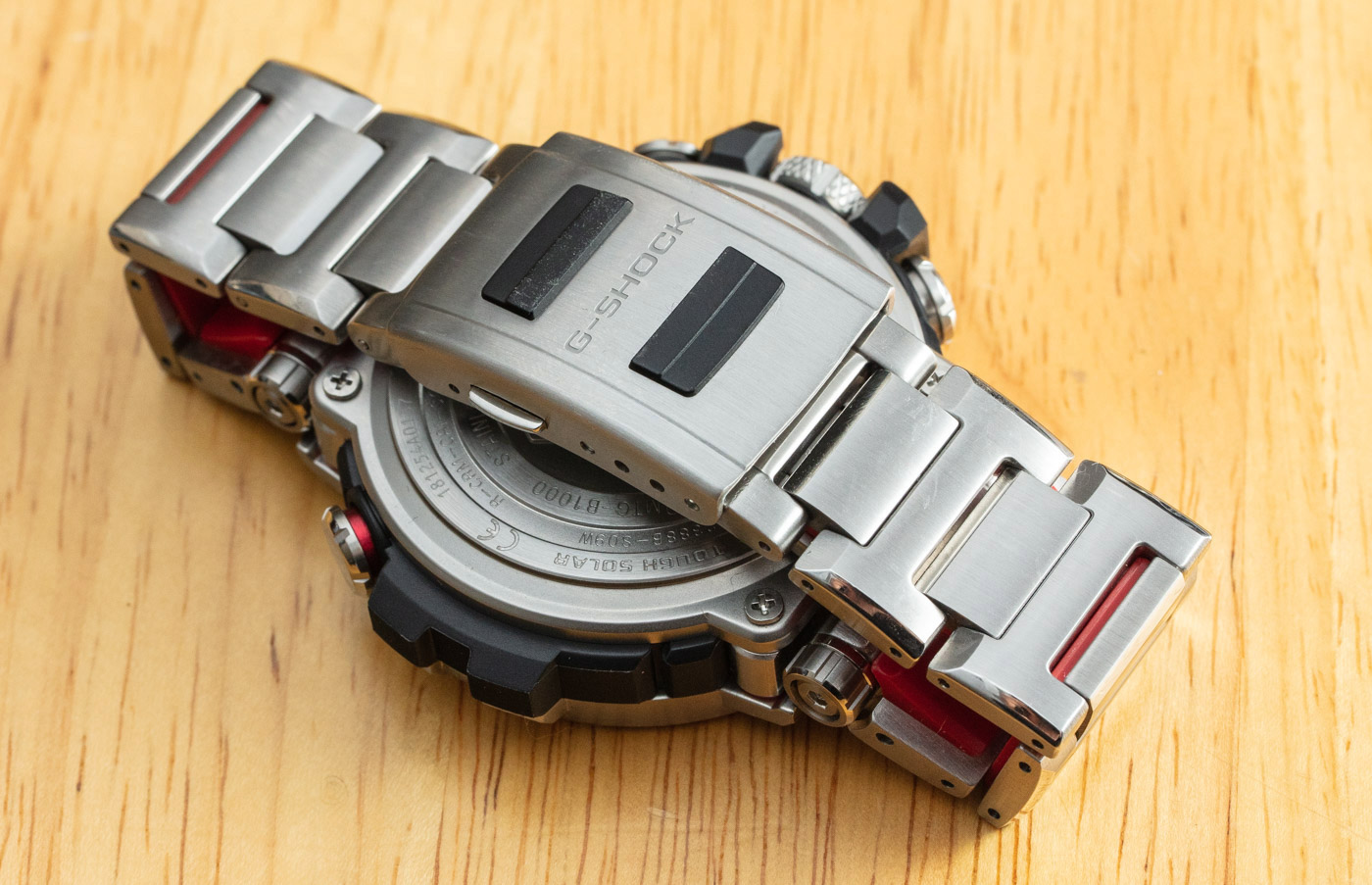
The G-Shock app does more than update the time of your watch upon initially setting it up or while traveling (which it also does). The app also serves as a “second screen” to the watch which allows you to adjust and set various features such as the alarm or the countdown timer. Again, these features are not always straightforward to actually set on the watch itself. So, if you want to set the watch’s alarm to go off at 2pm, it requires seconds to do it in the app, as opposed to having to recall how to do it on the watch. The app also offers diagnostic tools such as telling you the watch’s battery life, as well as allowing the software on the watch to be updated with things such as global timezone changes, etc.
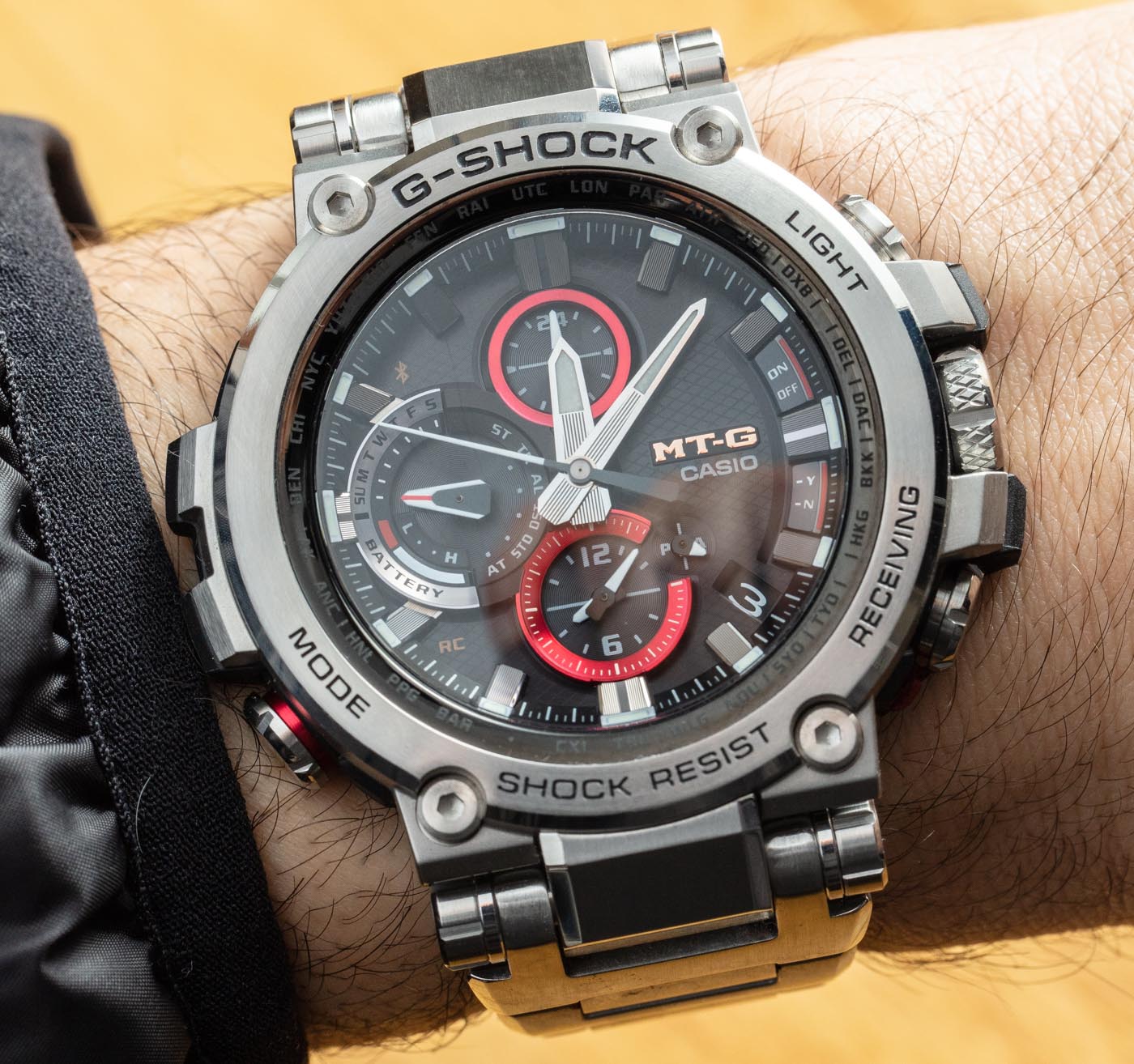
Returning to the 5544 module movement inside of the MTGB1000 watch, it is “solar,”meaning it is charged by the light, and, in addition to Bluetooth connectivity, it has a lot of useful features in it. On the dial of the watch, you have persistent displays for the time, date, day of the week, AM/PM indicator, and a 12-hour display for a second time zone (that has its own little AM/PM indicator dial). This latter second time zone feature is useful for travelers and, again, is one of those functions that can be easily adjusted via the G-Shock app.
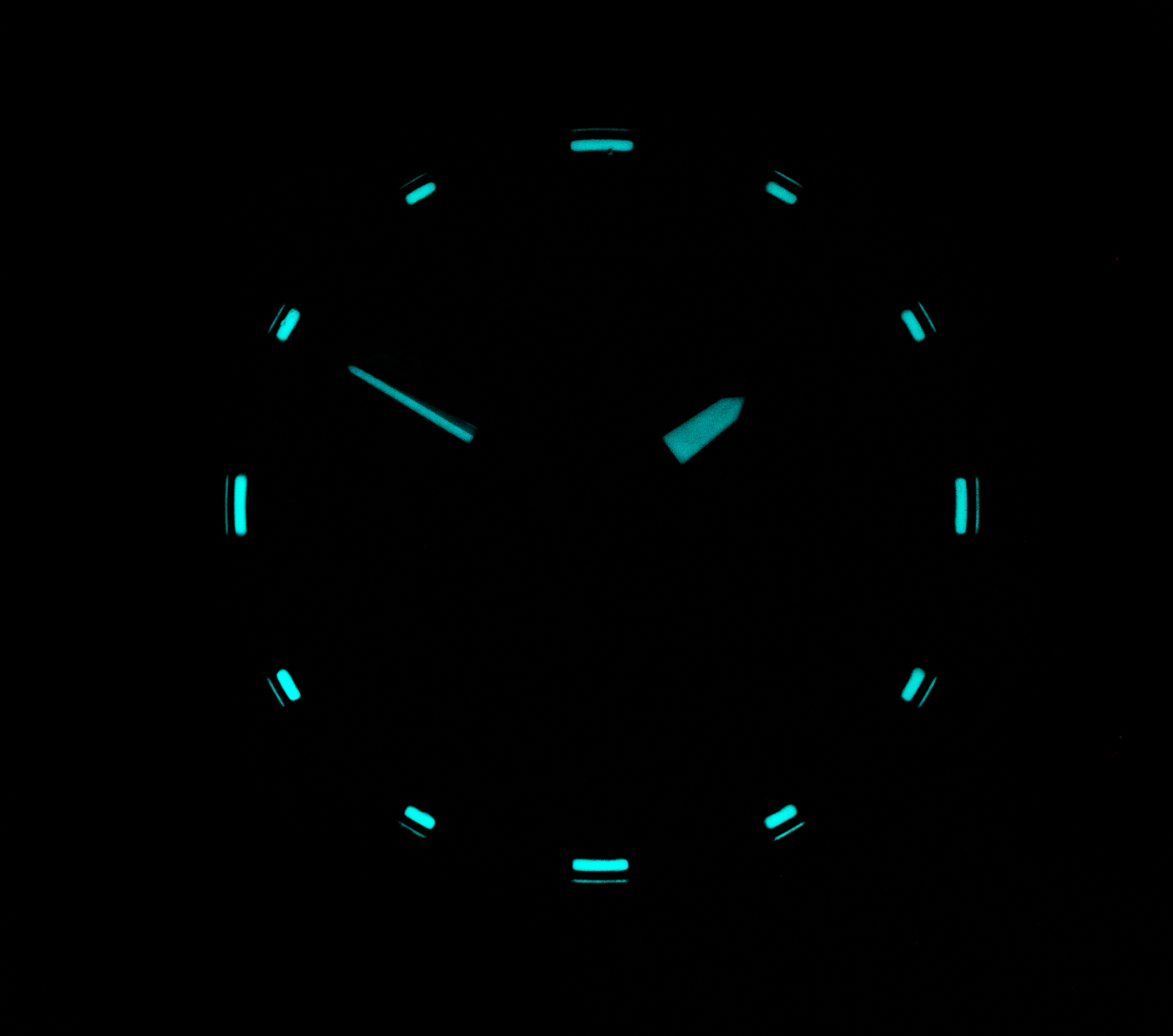
Even though the hands and hour markers are painted with luminant, the dial of the watch also has a bright LED light that easily illuminates the dial for viewing in all types of darkness environments. Other features of the movement include a chronograph, countdown timer, world time indicator, and alarm. A mode selector on the dial helps you cycle through the features, and the hands on the dial often repurpose themselves, given the current function mode. It can be fun to simply watch all the hands on the dial move around as you shift the MT-G face to chronograph mode.
